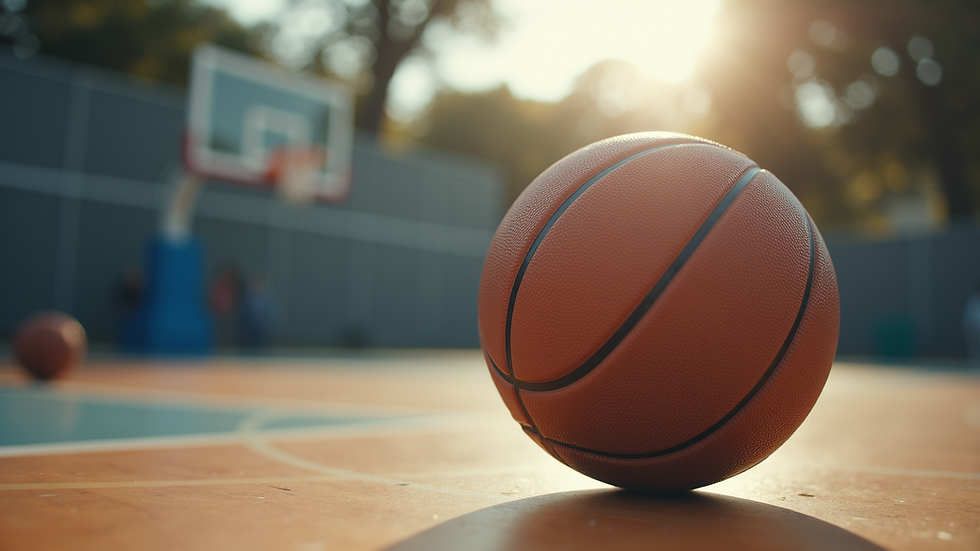How to Build a Strong Basketball Practice Routine
- Aug 18
- 4 min read
Developing a strong basketball practice routine is essential for players who want to improve their skills and performance on the court. Whether you’re just starting or looking to refine your technique, having a structured plan will help you make the most of your practice time. In this guide, we’ll delve into key components of a successful basketball routine and provide actionable recommendations to ensure you’re practicing effectively.
Key Components of a Basketball Routine
A well-rounded basketball practice routine consists of various components, including skill development, conditioning, and mental preparation. By focusing on each of these areas, you can ensure that your practice sessions are productive and beneficial.
Skill Development
Skill development is the cornerstone of any basketball routine. You need to work on fundamental skills such as dribbling, shooting, passing, and defensive techniques to improve your overall performance.
Dribbling: Spend time practicing different dribbling techniques, including crossovers, hesitation moves, and behind-the-back dribbles. Use cones or markers to set up obstacle courses for more dynamic practice.
Shooting: Incorporate a mix of free throws and jump shots into your routine. For instance, dedicate 30 minutes to shooting from different spots on the court. Use drills like the "around the world" to also improve your shooting range and accuracy. If you’re looking for a comprehensive approach, consider using a basketball shooting program that provides specific drills tailored to your needs.
Passing: Practice various passing techniques such as chest passes, bounce passes, and overhead passes. Team up with a partner or use a wall to improve accuracy and strength.
Defense: Work on your defensive stance, positioning, and footwork. Practice sliding drills and one-on-one scenarios to enhance your ability to defend against opponents.

Conditioning
Physical conditioning is crucial for basketball players. A solid fitness level ensures you can perform at your best throughout the game. Here are some elements to include in your conditioning routine:
Cardio Training: Incorporate running, cycling, or swimming into your routine to build endurance. Aim for at least 30 minutes of cardio three times a week.
Strength Training: Focus on exercises that build strength, particularly in your legs, core, and upper body. Incorporate squats, lunges, and push-ups into your routine to enhance your overall power.
Agility Drills: Agility is vital in basketball. Include ladder drills, cone sprints, and shuttle runs to improve your foot speed and coordination.
Mental Preparation
Mental toughness and focus can be the difference between winning and losing. Developing your mental skills should also be part of your practice routine.
Visualization: Spend a few minutes each day visualizing yourself performing well on the court. Picture the specific skills you want to improve and the success you want to achieve.
Goal Setting: Establish clear, achievable goals for your practice sessions. This can range from improving a shooting percentage to perfecting your defensive stance.
Mindfulness: Incorporate mindfulness techniques to stay focused and calm during games. Simple breathing exercises can help alleviate anxiety and enhance concentration.

Structuring Your Practice Sessions
A structured practice session can help you get the most out of your time on the court. Here’s how to effectively plan your routine:
Warm-Up: Start with a proper warm-up to prepare your body. This should include dynamic stretches and light jogging to increase your heart rate.
Skill Work: Divide your time evenly among the various skills you want to improve. Focus on a specific skill for a set period, ensuring you give each area attention.
Conditioning: Integrate conditioning drills throughout your session. For example, after skill work, you can do sprints or agility drills.
Cool Down: End your practice with a cool-down session, which includes stretching. This helps in recovery and prevents injuries.
Evaluating Your Progress
Regularly evaluating your progress is crucial for identifying areas for improvement. Here are some effective ways to track your development:
Video Analysis: Record your practices and review the footage to spot areas where you can improve. This will give you a visual reference for your skills.
Statistics Tracking: Keep track of important statistics, such as shooting percentage and assists. This data provides insight into your performance and helps set goals.
Feedback: Seek feedback from coaches or experienced players. Their insights can help identify strengths and areas where you might need to focus.

Staying Motivated
Maintaining motivation throughout your training can be challenging, particularly when you face setbacks. Here are strategies to keep your spirits high:
Find a Training Partner: Practicing with someone else adds enjoyment and accountability to your routine. You can push each other to improve and stay committed.
Mix It Up: Avoid monotony by varying your drills and routines. Incorporate fun games, such as shooting competitions, to break the routine.
Celebrate Small Wins: Recognize your progress, no matter how small. Celebrating achievements can foster a positive mindset and motivation.
By creating a practice routine that encompasses skill development, conditioning, mental preparation, structure, progress evaluation, and motivation, you can significantly enhance your basketball performance. Remember, consistency is key. Stick to your routine, be patient with your progress, and most importantly, enjoy the process of becoming a better player.


Comments